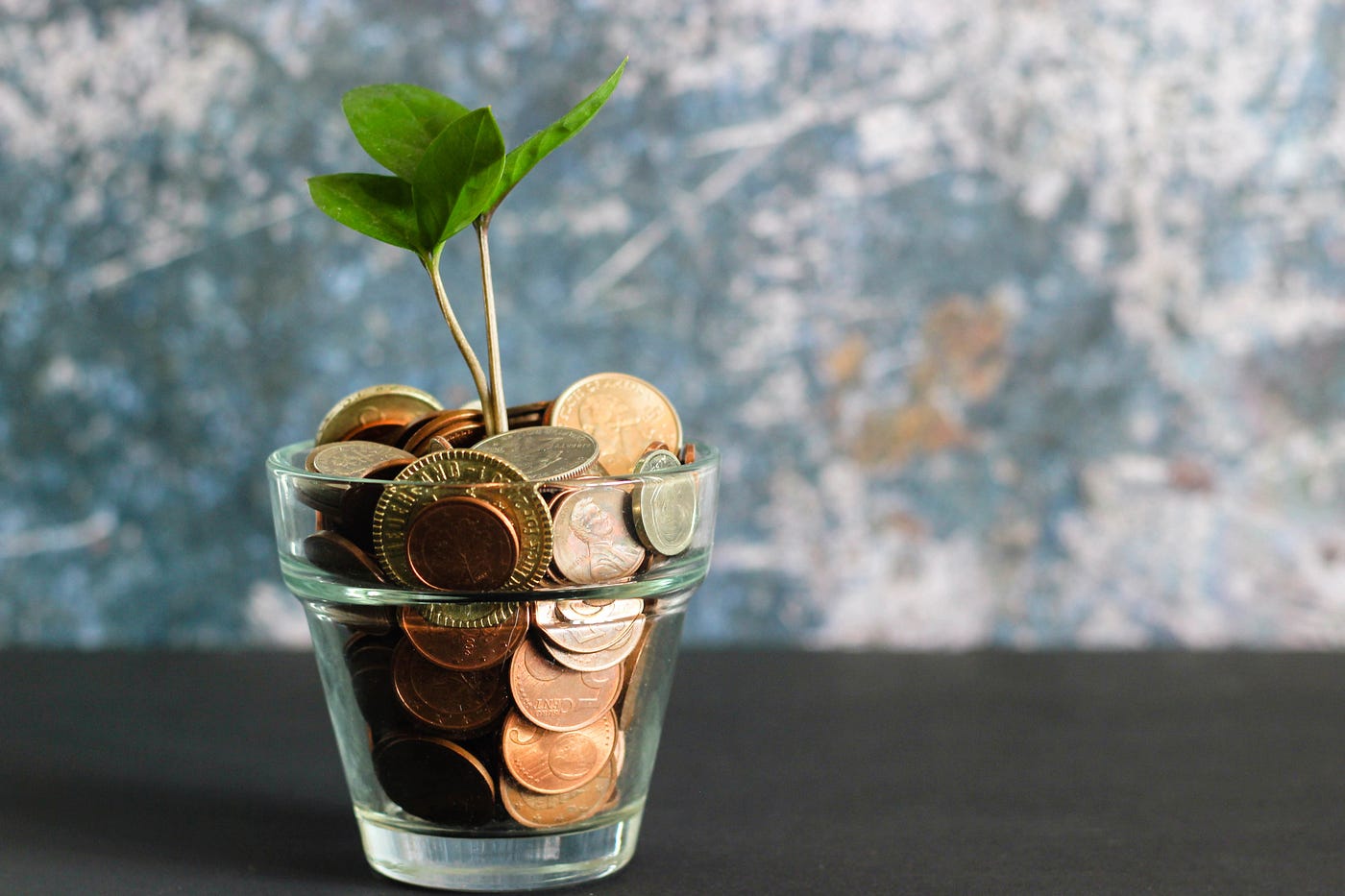How blockchain will enable and future proof your Circular Economy initiatives
Originally published on Aug 25, 2020. Circular Economy solutions need programmable trust. The long-running transactions between low-trust parties can be economically accomplished with a blockchain solution. The tamper-proof properties of the blockchain technology enable transfer of value and creation of irrefutable claims. The Circular Economy solutions with ambition to scale should incorporate these fundamentals early into their product journey to enable participation in yet to be developed networks.

The term “Circular Economy” hit peak interest per Google searches in February 2020. That’s relative to the period of time when Google started tracking the search data for this keyword in 2004. A classical example of a business built with circularity is the milk delivery service. A creamery uses reusable glass bottles that are cleaned, used, returned, and reused again. The bottles are standard size and can be reused multiple times by competing businesses. The glass vessels also have an incentivization mechanism: a deposit. A customer can return bottles to a receiving center, usually at a grocery store, and redeem empty bottles for cash. This circularity concept helps illustrate the sustainability efforts that customers now demand from every brand in every industry.
Sustainability is the business imperative of this decade. The topic has been made onto the boardroom agendas and it’s at the forefront of every CEO who realizes the consumer and their buying habits have changed. Major global brands, like Proctor and Gamble, Gucci, and Apple, are responding to consumer demands and market shifts with massive, high-profile sustainability initiatives. This shift expands across all consumer-based goods and services. On average, 70 percent of purpose-driven shoppers pay an added premium of 35 percent more per upfront cost for sustainable purchases, such as recycled or eco-friendly goods. Global brands, such as Levi’s, Patagonia, and Unilever, are responding to customer sentiment by incorporating circularity practices into their business processes. These efforts are positioning brand equity ahead of the competition in the eyes of sustainability-focused consumers. In the words of Apple: “Low impact [on the planet] is the new standard for high performance.” For a brand to stay relevant in consumers’ eyes, the focus on sustainability is critical from both the public opinion and the economic perspective.
Circular Economy Description
The circular economy is a socioeconomic system based on nature. It challenges the existing linear “take, make, waste” industrial model. A circular economy “decouples the economic activity from the consumption of finite resources, and designing waste out of the system”. The outline of a circular economy graphic, also known as the butterfly diagram, illustrates the “value loops” that show different ways an existing product can recirculate in its ecosystem instead of ending up in a landfill. The circular design calls for multiple reuse cycles of products and its parts over an item’s lifecycle. The ‘return of a bottle’ example referenced at the beginning is an example of the reuse cycle in action. However, the reuse cycles for complex and high-value products, such as electronics or fashion, with long-running transactions and possibly many components cannot be achieved with the simplicity of glass container reuse. As a product comes apart with time its components should serve the needs of downstream or upstream ecosystem participants while rewarding the previous owner(s).
Over the past decade a substantial volume of research and analysis has been done by the Ellen MacArthur Foundation and its partners. Massive inefficiencies in material usage, handling, and reuse across all industries is an opportunity that can be captured with disruptive technologies, policy shifts, and gradual change in consumer and business behaviors. For businesses the Reduce, Reuse and Recycle model in the context of a circular economy provides new business opportunities to generate new revenue from the already existing products. The economic viability and new business models are arising across all industries and all segments of the circular economy paradigm. This is documented in a report by McKinsey, an OECD analysis report, and in a book by Accenture.
Instrumenting products for programmable trust
It can feel overwhelming finding the right entry point to participate in the circular economy. Do you start with the product design and manufacturing or do you focus on the existing products? There is no definite guide, but there are many schools of thought. Potential starting points include changing product composition and seeking sustainable parts, using green energy sources for the manufacturing processes, but perhaps the more intuitive place to start is with the existing products and your customers. For product companies, your customers will play an integral role in enabling circularity through one of the new business models.

Transparency
Circularity is a path to sustainability. Customers that pay a premium for sustainable products demand verifiable facts about the key ingredients, the manufacturing process, touchpoints, and the people involved. This is where public blockchains play a key role. Product manufacturers, their ingredient suppliers, and other supply chain participants produce verifiable claims that link to the product. In some cases the claims cascade all the way down to the original sources. At Treum we built a web-based transparency solution to enable manufacturers and their suppliers to create and seal verifiable claims. Our solution builds on the tamper-proof properties of the public Ethereum blockchain to give each ingredient and manufacturing process step defensible protection with digitally signed accountability for the data and the overall product itself. This is because each data point is sealed with a digital fingerprint that belongs to a person or an organization performing a specific action. The evidence of signed data or action is stored on an always-on (100% uptime) public blockchain which provides instant traceability and guarantee of irreversibility. These properties mean you can trust the integrity of the information. The products protected with the Treum transparency solution go beyond static labels and improve the confidence and authenticity of the products with verifications that give credibility to your brand’s story.

Programmable Identity
The circular economy business models require long-running transactions and guarantees that something will occur even if a product is outside of the direct control of the manufacturer or a reseller. For the circular business models that require a product to be returned to a designated entity, how do you increase the chances of that happening? This can be done by giving each product a programmable identity in a form of a token. A digital token is simply a representation of a product or its parts. The power of a public blockchain solution comes from creating programmable actions associated with a token. At Treum our customers use tokens to claim ownership of the physical items, such as tokenized jerseys worn during live games by the NBA’s Sacramento King players. This is a big deal. A person can now claim ownership of a unique token that represents a specific item. This can be a Gucci bag, a fast fashion dress, or a digital camera. The token is a physical to digital bridge that can power the circular economy use cases where customer behavior needs to be encouraged through incentives that are locked into a token. For example, if a manufacturer wants a customer to perform preventative maintenance on a device or an object, then the reward for performing the desired action can be locked into the product and incrementally released to the owner when the desired action is taken (e.g., vacuum cleaner battery fully discharged every quarter to improve its longevity). Since tokens are transferable when a product changes hands the token and the associated history of actions and rewards can be transferred as well. Since no personal data is stored to make this solution work this GDPR-compliant history can give manufacturer insights into the product usage beyond the first customer.

Giving product transparency and a programmable identity that’s not controlled by a manufacturer builds the trust foundation between a brand and a customer. New businesses that contribute to the success of the manufacturers and enable circularity without centralized control are yet to be created. The product creators that give the transparency of their products through verifiable claims on a public blockchain, such as Ethereum, will always have a greater level of trust than brands that rely on static labels on a package. The creators that give their product a programmable identity through tokenization bridge the gap between the physical and the digital world. In doing so a product can become programmable in the future and the ownership of the product can be claimed by the customers.

